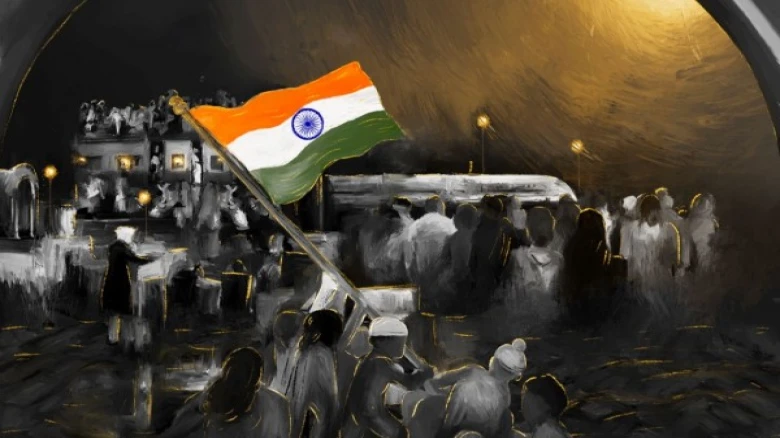North East

The evolution tells the story of the people who imagined and worked for a free India, as well as their struggles, perseverance, and hardships.
Digital Desk: This emotion has been heightened by Prime Minister Narendra Modi's "Har Ghar Tiranga," which saw the tricolour replace thousands of people's social media profile images. A nation's journey is just as important to its identity as its flag.
A nation's journey is just as important to its identity as its flag. The flag, which has the Ashoka Chakra as a pendant and stripes of saffron, white, and green layered in that sequence, is the result of many years of evolution. The evolution recounts the effort, tenacity, and hardships of the individuals who envisioned and fought for a free India.
The voyage began in 1906, during the national freedom movement when a variation of the unofficial national flag was initially recognized. The tricolor, or "tiranga," as we now know it, arose from the national flag as a result of numerous political, national, and temporal processes.

JOURNEY OF INDIANTRICOLOUR FLAG FROM 1906-1947
The first flag of India was raised on August 7th, 1906 at Calcutta. The flag at the time included only three red, yellow, and green horizontal stripes with the words "Vande Mataram" in the center.
The flag's red and green stripes each featured a sun, a crescent moon, and eight half-open lotuses. It is thought that liberation advocates Sachindra Prasad Bose and Hemchandra Kanungo designed it.
In 1907, Madame Cama and her group of exiled revolutionaries raised the second flag in Paris. The sole difference between the second flag and the first was that the upper strip of the second flag only featured seven stars, designating the Saptarishi. Additionally, this flag was displayed at a socialist gathering in Berlin.
During the Home Rule movement, Dr. Annie Besant and Lokmanya Tilak raised the third banner. This flag had seven saptarishi-shaped stars in an alternate pattern of five red and four green horizontal stripes. The Union Jack took up one corner of the flag, and there was a star and a crescent in the other.
Possibly realizing the importance of a national flag, Gandhi requested Pengali Venkayya to create one in 1921, using the spinning wheel (charka) as its emblem. Most of the credit for the flag's current form goes to Venkayya.
Venkayya gave this flag, which was made of two colors—red and green—and symbolized the two main communities—Hindus and Muslims—during the session of the AICC that gathered in Vijaywada in 1921. Gandhi reportedly advised that a white strip be added to this to signify the other communities in India.
After some alterations, the national flag was approved in 1931. Saffron was used in place of red, and the white strip was positioned in the center. The spinning wheel, or charka, was located in the center of the flag.
With the exception of the Ashok chakra replacing the charka, or spinning wheel, the national flag of independent India was quite identical to that of 1931. The saffron at the top of the tricolor represents bravery, the white at the bottom represents peace, and the green represents the luck of the land.
The 24 spokes of the dharma chakra, which is in the center, stand for the 24 qualities while representing movement and expansion.
Leave A Comment